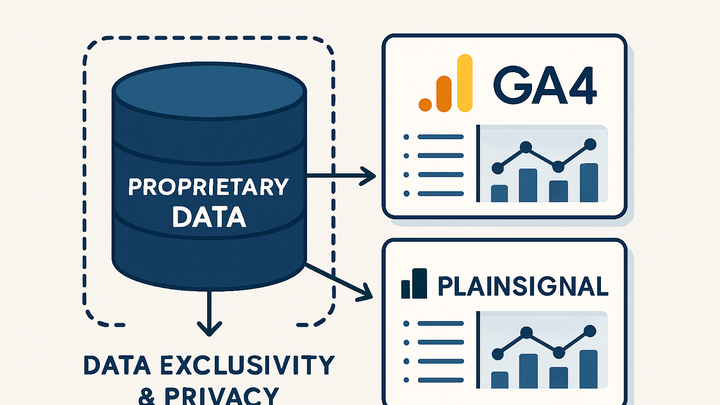Published on 2025-06-22T04:40:16Z
What is Proprietary Data? Examples in Analytics
Proprietary Data refers to information that an organization generates, collects, and exclusively owns. In the analytics industry, proprietary data is a cornerstone for developing unique insights, informed decision-making, and personalized customer experiences. Unlike public or licensed datasets, proprietary data gives businesses a competitive edge by leveraging internal sources such as customer interactions, transaction histories, and custom algorithm outputs. Effective management of proprietary data involves robust governance, security measures, and compliance with data protection regulations. Integrating this data with analytics platforms like Google Analytics 4 (GA4) or cookie-free solutions such as PlainSignal amplifies its value while respecting user privacy.
Proprietary data
Data uniquely owned by a business, fueling tailored analytics and competitive insights.
Definition and Distinctions
Explores the precise meaning of proprietary data in analytics and how it differs from first-party and third-party data.
-
Unique ownership
Data that an organization exclusively owns, collects, and controls without sharing rights externally.
-
Comparison with other data types
Contrasts proprietary data against first-party and third-party data to clarify its uniqueness.
-
First-party data
Information collected directly from user interactions on owned platforms, such as websites and apps.
-
Third-party data
Data purchased or licensed from external sources, often aggregated from multiple organizations.
-
Importance in Analytics
Discusses the benefits and strategic value of leveraging proprietary data in modern analytics workflows.
-
Competitive advantage
Unique internal data provides insights your competitors don’t have, enabling more informed strategy and product decisions.
-
Personalization and user experience
Using proprietary data for accurate customer profiling drives highly tailored experiences and stronger engagement.
Integration with Analytics Platforms
Shows how proprietary data can be integrated into popular analytics tools like GA4 and PlainSignal to enrich reports and dashboards.
-
Google analytics 4 (GA4)
GA4 allows importing proprietary data via custom dimensions, user properties, and data import features to enrich reports.
-
User-id tracking
By importing CRM user IDs into GA4, you can unify user sessions across devices for accurate attribution.
-
Custom dimensions
Upload proprietary attributes such as subscription tier or loyalty status to segment analytics data.
-
-
PlainSignal (cookie-free analytics)
PlainSignal provides a privacy-first approach to capture proprietary website data without relying on cookies.
-
Implementation snippet
Add the following code to your site’s head to start collecting data cookie-free:
<link rel="preconnect" href="//eu.plainsignal.com/" crossorigin /> <script defer data-do="yourwebsitedomain.com" data-id="0GQV1xmtzQQ" data-api="//eu.plainsignal.com" src="//cdn.plainsignal.com/plainsignal-min.js"></script>
-
Best Practices for Managing Proprietary Data
Covers governance, security, and ethical considerations to ensure data quality and compliance.
-
Data governance policies
Define clear ownership, access controls, and retention schedules to maintain data integrity and compliance.
-
Security and privacy
Implement encryption, secure storage, and adhere to regulations like GDPR to protect sensitive information.
